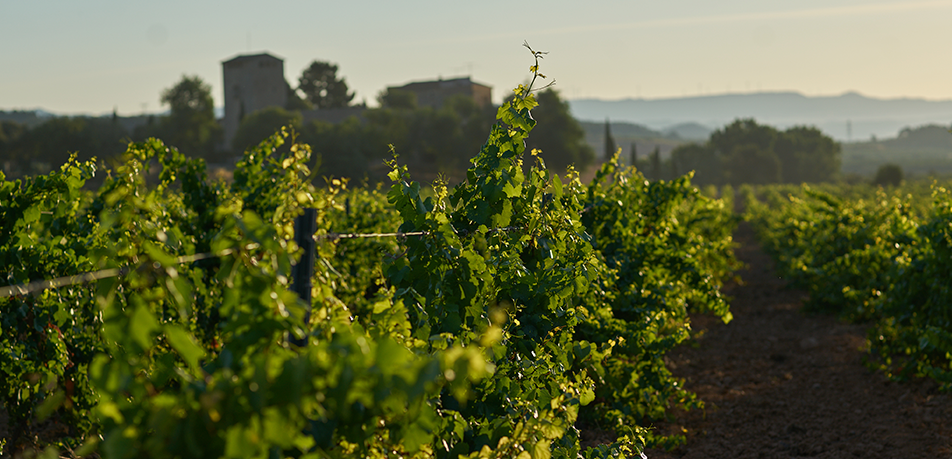THE VINEYARD'S TANGIBLE HERITAGE (II)

Today the Conca de Barberà appellation of origin brings history and vinicultural excellence together, framed by ancient localisms and a spirit of innovation steeped in its Burgundian abbatial heritage. The names of estates like Milmanda and Les Muralles embody the prestige of the region's wines.
From Burgundy to Vimbodí
The vineyards in this part of the Tarragona province are home to living archaeological elements, silent narrators of the history within the country's best wines. However, to understand the agricultural and even anthropological development of the modern-day appellation of origin, and how it grew up in the enormously influential shadow of monastic tradition, requires a journey into the past.
[[{"fid":"18380","view_mode":"default","fields":{"format":"default","alignment":"","field_file_image_alt_text[und][0][value]":false,"field_file_image_title_text[und][0][value]":false},"type":"media","field_deltas":{"6":{"format":"default","alignment":"","field_file_image_alt_text[und][0][value]":false,"field_file_image_title_text[und][0][value]":false}},"link_text":null,"attributes":{"height":439,"width":1322,"class":"media-element file-default","data-delta":"6"}}]]
In Vimbodí, we find the Milmanda estate and its fortified farm, marked by the passage of time, with vestiges of Iberian, Greco-Phoenician and Roman settlements. They all found their home here, their way of life, even prior to the existence of the neighboring monastery of Poblet. The Visigoths, however, are credited with building the castle, which was fortified during Islamic rule and later became an abbatial property.
After defeating the Muslims in 1153, Ramón Berenguer IV turned the monastery into an abbey thanks to the generous support of the Count of Barcelona. The abbey soon established a system of farms and transhumance (seasonal livestock migration). An important provision of the foundational charter was the written requirement that residents have a vegetable garden, a vineyard and a cemetery.
The Cistercian Order has its origins in Burgundy, where the monks sought their sites out strategically, insisting on places with plenty of water. They were known as the “monks of water and wine.”
[[{"fid":"18381","view_mode":"default","fields":{"format":"default","alignment":"","field_file_image_alt_text[und][0][value]":false,"field_file_image_title_text[und][0][value]":false},"type":"media","field_deltas":{"7":{"format":"default","alignment":"","field_file_image_alt_text[und][0][value]":false,"field_file_image_title_text[und][0][value]":false}},"link_text":null,"attributes":{"height":410,"width":1297,"class":"media-element file-default","data-delta":"7"}}]]
Over time, Poblet expanded its holdings, mostly thanks to parcels donated by landowners with monastic airs who were eager to cultivate close relations. Between the 12th and 15th century, Gascon, Occitan and French monks and peasants repopulated the region. Of the recent arrivals, 25% were winegrowers and wineskin-makers by trade who also had a penchant for marrying Catalan women. This planted the seed of the future appellation of origin, which clearly had wine in its blood.
Milmanda and Grans Muralles
Talking about modern-day Milmanda means talking about an estate whose soils and vineyards, paths and boundaries embody the very passage of time. This magical enclave inspired Familia Torres to grow the elegant Chardonnay variety, which ripens beautifully here thanks to the region's excellent geo-climatic conditions.
The result is Milmanda, the wine: fresh density and varietal acidity play off oak aging in an alchemy-like symbiosis. Toasted bread, smoke and coffee. Equally creamy and sensuous, this is a Chardonnay with a Burgundian spirit and a Mediterranean soul.
Halfway between Milmanda castle and the Poblet monastery, we find walls built by the Cistercian Order during the 15th century. They shelter more than thirty hectares planted with traditional Mediterranean varieties like the hardy Monastrell, sweet Garnacha and two local grapes, Garró and Samsó, that reap the benefits of the schist soils, the unique microclimate and an environment rich in culture and history: the Grans Muralles estate.
The name is synonymous with one of Familia Torres’s flagship wines, Grans Muralles: warm, intense complexity on the nose, exotic and spicy with a world of clove, pepper, bay leaf and thyme. Subtle notes of vanilla and frankincense. A vivid reminiscence that evokes memories of various lives seemingly anchored in our collective unconscious.
Crossroads of culture, the vicissitudes of war, and monastic winemaking experience define the captivating personality of this enclave, a place that connects with the past and enriches us as winemakers and individuals by creating shared spaces of knowledge and exchange. A metaphor for how a society is structured around its heritage, the vestiges of its past. The old and the new. Life itself.
